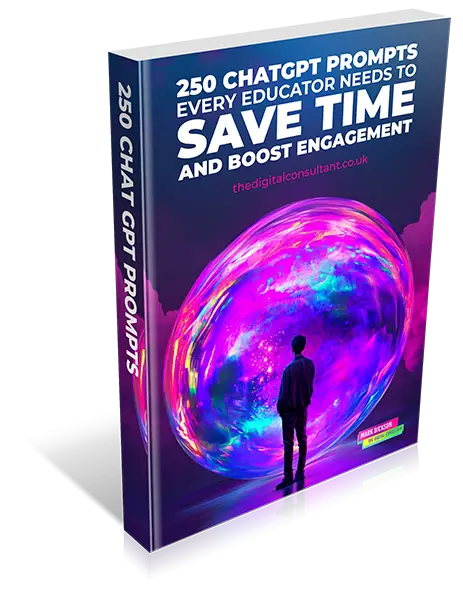How to Harvard Reference: A Step-by-Step Approach with Examples
If you’re a teacher, trainer, or assessor, ensuring students understand how to Harvard reference correctly is essential. The Harvard referencing system is one of the most widely used citation styles in academic writing. It helps students give proper credit to sources, avoid plagiarism, and demonstrate research depth.
I’ve been teaching for over 20 years, and in that time, I’ve guided thousands of students through the painful yet necessary process of how to Harvard reference correctly. I’ve marked assignments filled with missing citations, jumbled reference lists, and the occasional attempt at citing Wikipedia as an academic source.
And yet, despite all those years of explaining it, I still forget how to do it myself sometimes! Every so often, I’ll be writing an article or helping a student when I find myself Googling “How to Harvard reference a book with two authors” like it’s my first day on the job. The truth is, referencing can feel like a never-ending puzzle, even for experienced academics.
This guide will walk you through how to Harvard reference, step-by-step, with easy-to-follow examples and guidance on in-text citations, reference lists, and using Microsoft Word’s referencing tools.
What is Harvard Referencing?
Harvard referencing is an author-date citation system. It consists of two key components:
- In-text citations – These appear within the body of your work. They include the author’s surname and the year of publication.
- Reference list – A full list of all cited sources, arranged alphabetically by the author’s surname, at the end of the document.
Example:
- In-text citation: (Smith, 2020, p.45)
- Reference list entry: Smith, J. (2020) Harvard referencing made simple. Oxford: Oxford University Press.
Why Use Harvard Referencing?
- Avoids plagiarism
Properly crediting sources prevents academic dishonesty. - Strengthens arguments
Referencing credible sources improves the reliability of an argument. - Demonstrates research skills
Shows a student has engaged with academic materials.
Tip for Teachers: Encourage students to build their reference list as they research, rather than at the last minute!
How to Harvard Reference (Step-by-Step)

1. How to Cite Books
In-text citation
- Single author: (Johnson, 2018, p. 112)
- Two or three authors: (Brown and Taylor, 2021, p. 55)
- Four or more authors: (Wilson et al., 2022, p. 76)
Reference list entry
- One author: Johnson, A. (2018) Understanding research methods. London: Routledge.
- Two authors: Brown, P. and Taylor, L. (2021) Introduction to psychology. Oxford: Oxford University Press.
- Four or more authors: Wilson, M., Clarke, S., Patel, R. and Green, T. (2022) Modern economics. Cambridge: Cambridge University Press.
Tip: If the book has multiple editions, include this detail, e.g., 3rd edn.
2. How to Cite Journal Articles
In-text citation: (Harris, 2020, p. 27)
Reference list entry
- Printed journal article: Harris, T. (2020) ‘The impact of social media on education’, Journal of Educational Research, 56(4), pp. 25–39.
- Online journal article with DOI: Carter, L. (2021) ‘AI in the classroom: A new era’, Education & Technology, 15(2), pp. 101–113. doi:10.1080/12345678.2021.9876543.
Tip: Always include the volume, issue number, and page range for journal articles. Add the DOI if available.
3. How to Cite Websites
In-text citation: (BBC, 2023)
Reference list entry
- Website with author: Gibson, H. (2022) ‘The future of online learning’, The Guardian. Available at: https://www.theguardian.com/education/online-learning (Accessed: 10 January 2023).
- Website without author: BBC (2023) ‘Climate change and education’. Available at: https://www.bbc.co.uk/climate-change-education (Accessed: 5 February 2023).
Tip: Encourage students to record the access date for online sources.
4. How to Cite Images and Figures
In-text citation: (Van Gogh, 1889)
Reference list entry
- Book illustration: Van Gogh, V. (1889) The Starry Night. Museum of Modern Art, New York.
- Online image: Banksy (2019) ‘New street art in London’. Available at: https://www.banksy.co.uk/new-art (Accessed: 7 May 2023).
Tip: If students use their own image, they should state this clearly in the reference list.
5. How to Use Microsoft Word’s Referencing Tool

Microsoft Word includes built-in referencing tools. These allow students to:
- Insert in-text citations easily.
- Automatically generate reference lists.
- Select citation styles, including Harvard.
- Save time on formatting.
Encourage students to explore this tool through the References tab in Word.
Master Harvard Referencing with Confidence
Harvard referencing may seem overwhelming at first, but with practice, it becomes much easier.
Whether you’re a student aiming for top marks, a teacher guiding learners, or an academic refining your research, following this guide will help ensure accuracy, credibility, and academic integrity.
The key is to practice consistently, use tools like Word’s referencing feature, and refer back to this guide whenever needed.






